Flags of the American Revolution
Celebrating the 4th of July with a tour of historical flags!
The Fourth of July holds more meaning to me since I started researching my ancestry. I know of at least five direct ancestors listed in the Sons of American Revolution database. In my last post I discussed one of them, my 7th great-grandfather John Graham, who fought at the Battle of Bunker Hill. Levi Loveland, my 6th great-grandfather, fought and was captured at the Battle of Long Island, (also known as the Battle of Brooklyn).
As I pondered what to write for this momentous holiday, that hasn’t been written a hundred times, I decided to share with you my curiosity about the various flags used during the Revolutionary War era.
Note: There are variations of several of these flags, I chose the variation most likely to be more commonly used or the oldest version. I used the highest quality images I could find, but some flags lacked options. If you find any errors or higher quality images, please reply. If I make any updates after publication I will note below, with the date of the update.
Flags Representing Colonial Unity
These flags were used by groups like the Continental Congress, Army, or Navy, or symbolized broad resistance movements across the thirteen colonies.
Grand Union Flag (Continental Colors, Cambridge Flag)
Description: Thirteen red and white horizontal stripes with the British Union Flag in the canton.
Significance: The first de facto national flag, raised on December 3, 1775, aboard the Alfred in Philadelphia and by George Washington on January 1, 1776, in Cambridge, Massachusetts. It represented the thirteen colonies’ unity while initially signaling loyalty to the Crown, influenced by the British East India Company flag.
Use: Flown by the Continental Army and Navy until 1777, symbolizing collective resistance.
Sons of Liberty Flag (Rebellious Stripes)
Description: Originally nine vertical red and white stripes (1765), later thirteen horizontal stripes (by 1773), sometimes with a snake symbol.
Significance: Born during the Stamp Act Congress, it evolved to represent all thirteen colonies after the Boston Tea Party, symbolizing united opposition to British policies like the Townshend Acts.
Use: Raised at Liberty Poles and during protests, especially by the Sons of Liberty.
Gadsden Flag
Description: Yellow field with a coiled rattlesnake and “Don’t Tread on Me.”
Significance: Designed by Christopher Gadsden in 1775 for the Continental Navy and considered the first U.S. Marines flag. The rattlesnake, popularized by Benjamin Franklin’s “Join, or Die” cartoon, symbolized colonial defiance.
Use: Flown on naval ships, including during the 1776 Bahamas raid.
First Navy Jack
Description: Thirteen red and white stripes with a rattlesnake and “Don’t Tread on Me.”
Significance: Allegedly used by the Continental Navy in 1776 under Commodore Esek Hopkins, though evidence is debated. It echoed the Gadsden Flag’s message of unity and resistance.
Use: Likely a naval ensign, symbolizing the colonies’ maritime efforts.
Pine Tree Flag (An Appeal to Heaven Flag)
Description: White field with a green pine tree and “An Appeal to Heaven,” sometimes on a red or blue field.
Significance: Used by Washington’s Cruisers and possibly at Bunker Hill, the pine tree was a New England symbol of resistance, with the motto invoking divine support.
Use: Flown by Massachusetts naval forces and during the Siege of Boston.
Betsy Ross Flag
Description: Thirteen red and white stripes with thirteen five-pointed stars in a circle on a blue canton. There is debate about whether Betsy Ross made the flag.
Significance: Adopted on June 14, 1777, as the first official U.S. flag, replacing the Grand Union Flag. It marked the colonies’ declaration of independence.
Use: Carried by the Continental Army and Navy post-1777.
Bennington Flag
Description: Thirteen red and white stripes with thirteen stars and “76” in the blue canton.
Significance: Allegedly flown at the Battle of Bennington (1777), symbolizing a victory by New Hampshire and Vermont militias. Its use is debated but iconic.
Use: Associated with the Green Mountain Boys.
Washington’s Standard
Description: Blue field with thirteen white stars, one of the earliest surviving 13-star flags.
Significance: Marked General George Washington’s presence, symbolizing unified command of the Continental Army.
Use: Carried across multiple campaigns by Washington’s forces.
Dansey Flag
Description: Thirteen red and white stripes on green.
Significance: Captured by the British in 1777 before the Battle of Brandywine, it was used by a Delaware militia, representing early colonial unity.
Use: Carried in early war skirmishes.
Colony-Specific Flags with Revolutionary Impact
These flags were tied to individual colonies or regiments but contributed to the broader fight for independence.
Fort Moultrie Flag
Description: Blue field with a white crescent moon and “LIBERTY.”
Significance: Designed by William Moultrie for South Carolina’s defense of Fort Johnson, flown during the 1776 Battle of Sullivan’s Island.
Use: South Carolina troops, inspiring colonial morale.
Taunton Flag
Description: Red field with a British Union Flag and “LIBERTY AND UNION.”
Significance: Raised in Taunton, Massachusetts, in 1774 to protest British policies, advocating for colonial rights.
Use: Local protests in Massachusetts.
Bunker Hill Flag
Description: Blue field with a white canton, red St. George’s Cross, and possibly a pine tree.
Significance: Allegedly flown at Bunker Hill (1775), symbolizing New England resistance, though evidence is inconclusive.
Use: New England forces.
New England Flag
Description: Red or white field with a white canton, often with a green pine tree.
Significance: A long-standing New England symbol, adapted during the Revolution to exclude British elements.
Use: Common in Massachusetts, New Hampshire, and Maine.
Culpeper Minutemen Flag
Description: White field with a rattlesnake, “Don’t Tread on Me,” and “Liberty or Death.”
Significance: Used by Virginia’s Culpeper Minutemen under Patrick Henry in 1775.
Use: Virginia militia in early battles.
Bedford Flag
Description: Red field with an armored arm holding a sword, inscribed with “Vince aut Morire” (Conquer or Die).
Significance: Carried by Bedford Minutemen at Lexington and Concord (1775), one of the earliest battle flags.
Use: Massachusetts militia.
Third New York Regiment Flag
Description: Blue field with New York’s coat of arms.
Significance: Gifted in 1779, it influenced New York’s modern state flag.
Use: New York regiment in battles like Fort Stanwix.
Bucks of Massachusetts Flag
Description: Silk flag with a buck symbol and “J.G.W.H.” (John Hancock and George Washington Hancock).
Significance: Presented in 1785 to the all-Black Bucks of Massachusetts militia, who protected Boston merchants.
Use: Massachusetts militia, post-war.
Historical Notes
Materials and Variations: Flags were often silk or wool, with designs varying due to local production. Red, white, and blue became standard, but green, black, and yellow appeared in some.
Evidence Gaps: Flags like the First Navy Jack and Bunker Hill Flag have debated historical use due to limited records.
British Flags: The British Red Ensign and King’s Colors were used by loyalists and British forces but are excluded here as they opposed the colonial cause.
If you want to take a deeper dive and explore other flags I didn’t include, here are three recommendations:
Which flags reflect your American Heritage? What do flags mean to you? Which flag did I not include that you know about?
Thanks for reading. I invite you to meditate on the bravery of our ancestors, the Founding Americans.




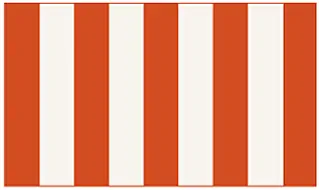
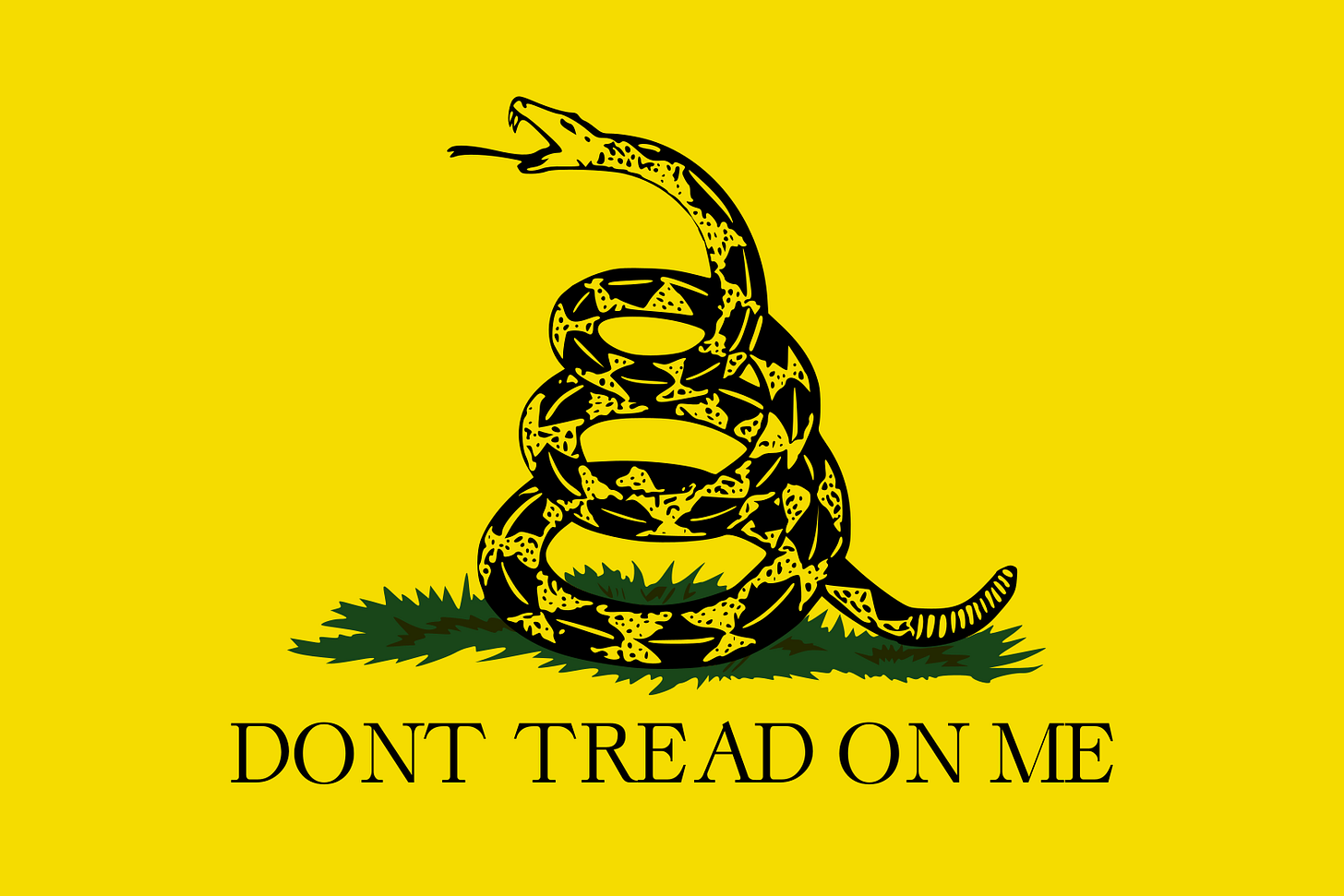


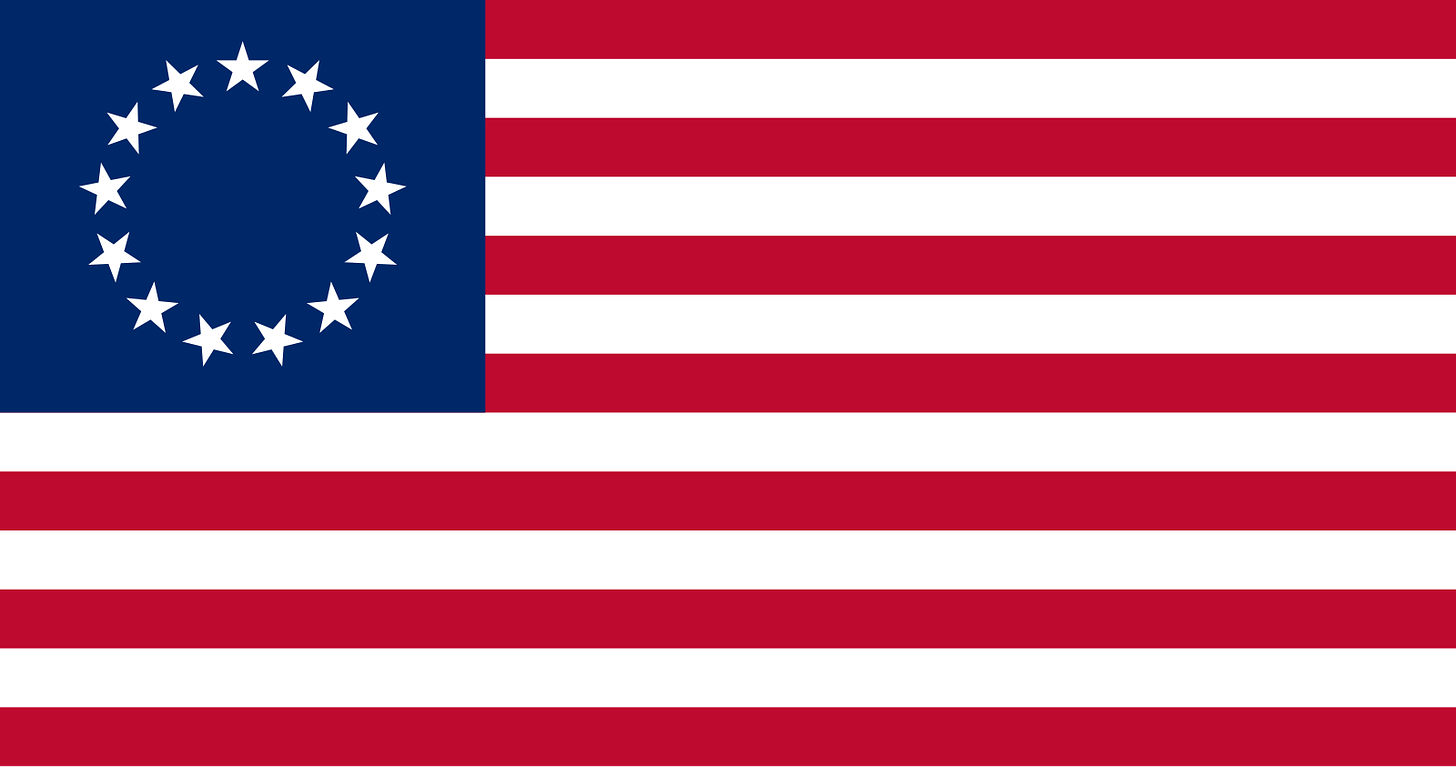
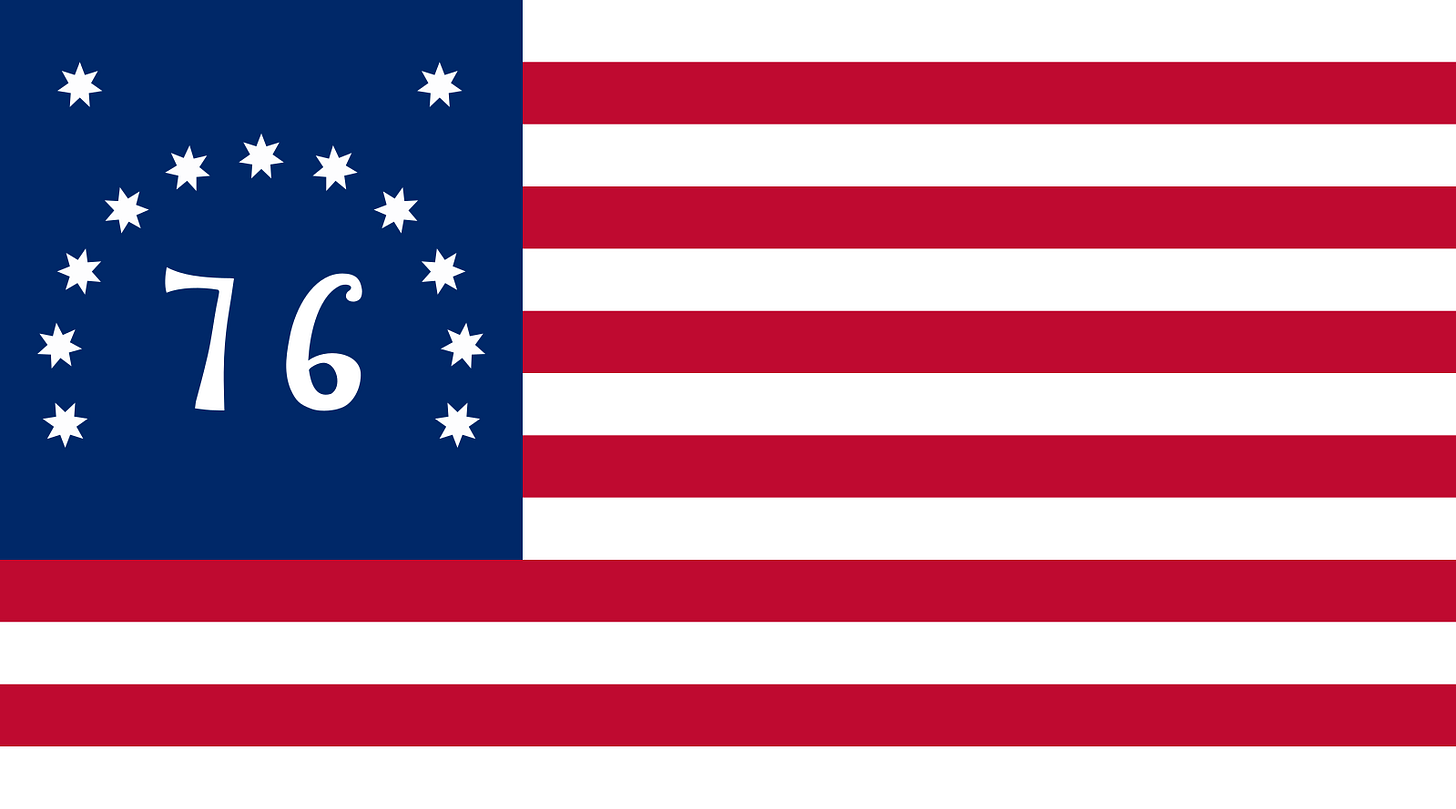


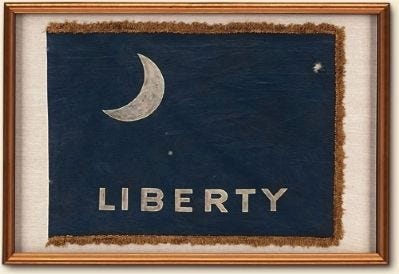





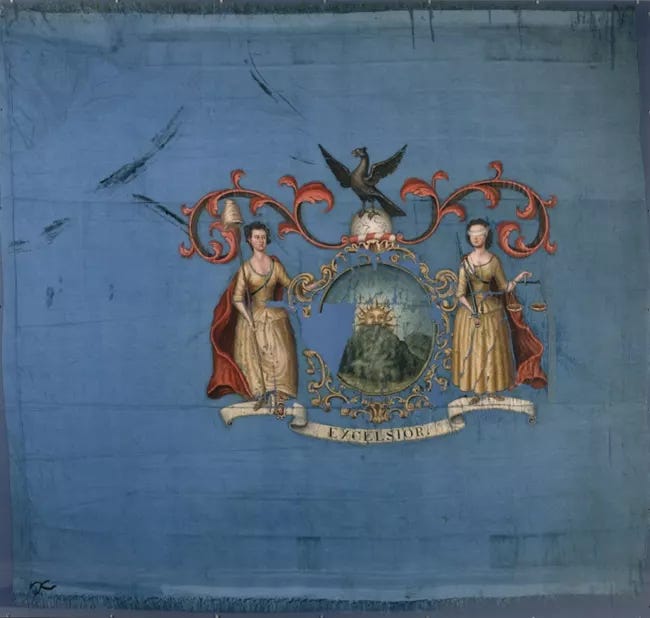
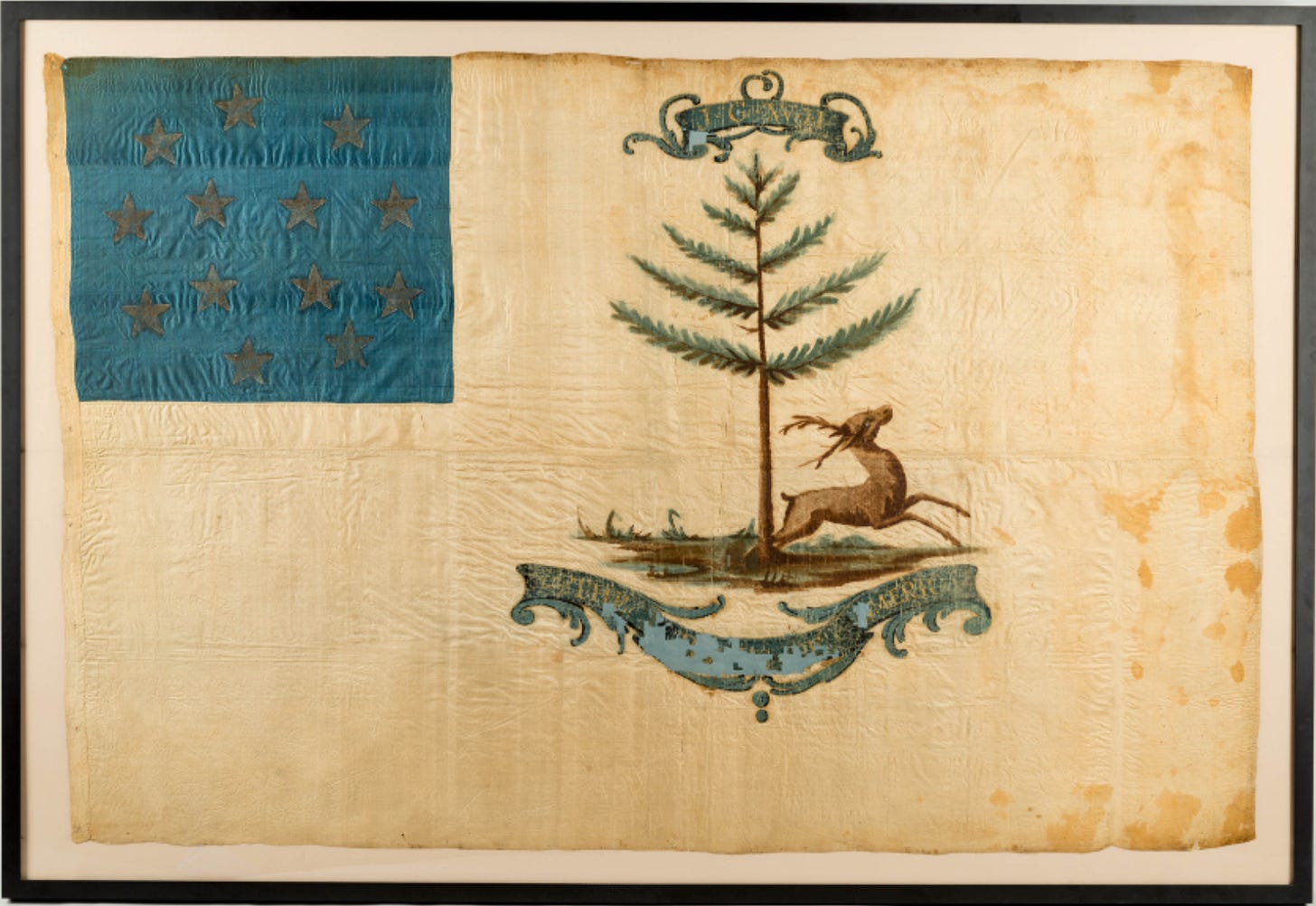
Fascinating post. I must say that the New England and Culpepper Flags are most reflective of my heritage personally speaking but I think the Bedford and Gadsden flags are the best. Happy Independence Day. God Bless America!
Thanks for actually doing a deep dive on this. I think people lose sight of just how many changes our flag has undergone in the near two and half centuries of our countries history.